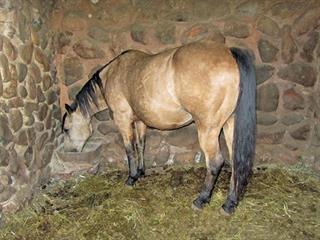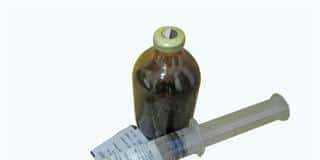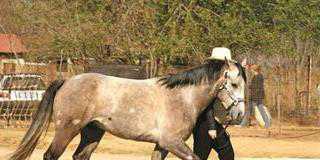
Although an equine pregnancy is supposed to last 11 months and 11 days after the last mating, this period can vary. Foals can be born up to two weeks before or after their due date and this sometimes makes owners very nervous. The question is: are you right to be nervous? After all, birth is natural, and takes place in the wild. The fact is, there are many potential complications and it really is important to make sure that the mare is well cared for and under observation during foaling.
Getting ready
Heavily pregnant mares should be separated from the herd into a smaller camp, where they can still see their friends, but are easier to observe. Even in a wild herd, the mare will leave the rest, often with a ‘matron’ or older mare for company, and foal on her own. The stable should be cleaned out and filled with a thick bed of hay daily (sawdust and manure can clog the nasal passages of a newborn foal). Most mares foal standing up, so the foal needs a soft place to land. It’s not advisable to foal outside, as predators such as jackals and stray dogs can attack and kill a newborn foal.
Signs that birth is close
The hips ‘drop’ two to three weeks before the birth to enable the foal to pass easily through the birth canal. Looking from the side: you will notice that the hips appear to slope more than usual. A slight hollow also develops on each side at
the root of the tail. At the same time, the stomach grows larger and more pendulous and the udder starts to swell. During the last two or three days before birth, the udder becomes fairly hard and the teats ‘wax’, showing a small drop of greyish fluid at each tip.
A few days before birth, the vulva swells and becomes flabby, so that it can stretch during the birth process. The mare’s behaviour changes. She can be irritable in the last few days before foaling, swishing her tail, turning to look at her flanks and kicking at them. She will lie down more frequently than usual and may roll, as though she has colic. In the last 24 hours, she is likely to produce a loose stool; it is thought that this may be the result of the first uterine contractions.
In labour
During the first stage of labour, the mare may get up and lie down repeatedly. She is likely to sweat profusely and may paw at the ground. If in the paddock, she may begin walking purposefully up and down along the fence. Her abdominal muscles clench slowly at first as the foal is positioned in the birth canal, then the contractions increase in force. At the end of the first stage of labour, the waters break.
The second stage of labour, which lasts for an hour, ends with the birth of the foal. The feet appear first, followed by the face, with the chin resting on the knees. If the second stage takes longer than an hour, a vet should be consulted.













